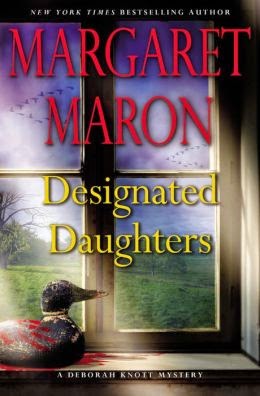 and Crimestalkers Casebook. He is a past winner of The Black Orchid Novella Award, The Vermont Playwrights Award, and The Nor’easter Play Writing Contest.
and Crimestalkers Casebook. He is a past winner of The Black Orchid Novella Award, The Vermont Playwrights Award, and The Nor’easter Play Writing Contest.Nethercott applied the Page 69 Test to his latest novel, The Haunting Ballad, and reported the following:
The Haunting Ballad is the second whodunit in my traditional mystery series. It features the sleuthing odd couple from The Séance Society: reluctant young private eye Lee Plunkett and scholarly Irishman Mr. O’Nelligan. It's the spring of 1957 as the detectives enter the burgeoning music scene of New York City's Greenwich Village. A controversial folk song collector has plunged from her apartment roof and foul play is suspected.Visit Michael Nethercott's website and Facebook page.
This novel’s page 69 is actually a half page, the start of Chapter Seven. It’s an interesting roll of the dice (as, I gather, 69th pages tend to be.) We have here one single paragraph dedicated to a description of the Village street life. Our sleuths are on their way to the Café Mercutio, a coffee house where many of the suspects—folk musicians and Beat poets—perform and socialize. Lee narrates:After parking, we still had a couple of blocks to walk to the Mercutio. Now firmly in the heart of Bohemia, we navigated through a stream of locals, many young and casually dressed. There seemed to be a disproportionate number of them in black, and several were sporting sunglasses—despite the fact that the sun had gone down. We passed bookstores, record shops, magazine stands, restaurants, and cafés. Leaning against one stretch of brick wall, a dozen paintings, framed and unframed, formed a sort of impromptu art gallery. Most of these works were vivid, chaotic explosions of color, all with price tags affixed. A little ways beyond, standing outside a storefront labeled FOLKLORE SOCIETY, one young man was playing a harmonica while another juggled a trio of alarm clocks. Yes, alarm clocks.My intent here was to show, with a nice bite-sized sketch, the colorful, lively, quirky world of Greenwich Village in those years. This was the period where the nonconformist Beat scene and the folk music movement were overlapping, and the Village was at the hub of it all.
My stories are very much influenced by the Golden Age writers—Agatha Christie, Rex Stout, and their ilk—and I take the “whodunit” piece to heart. I like a lot of interesting suspects with mysterious backgrounds and cagey motives, and in The Haunting Ballad I’ve attempted to deliver that. The death of the “songcatcher” leads Plunkett and O’Nelligan to a diverse group of suspects including the Mercutio’s eccentric owner, a family of Irish balladeers (who may be IRA), a bluesy ex-con, a hundred-and-five-year-old Civil War drummer boy, and a self-proclaimed “ghost chanter” who sings songs that she receives from the dead. And just to complicate things, one suspect is a handsome, smooth-talking young folk singer who Lee's fiancée Audrey is captivated by.
Along the way, our deductive duo encounters a good amount of puzzling leads, desperate situations, and twists and turns. And, of course, they must answer that core question of all mystery novels: Who done it?
The Page 69 Test: The Séance Society.
--Marshal Zeringue






























